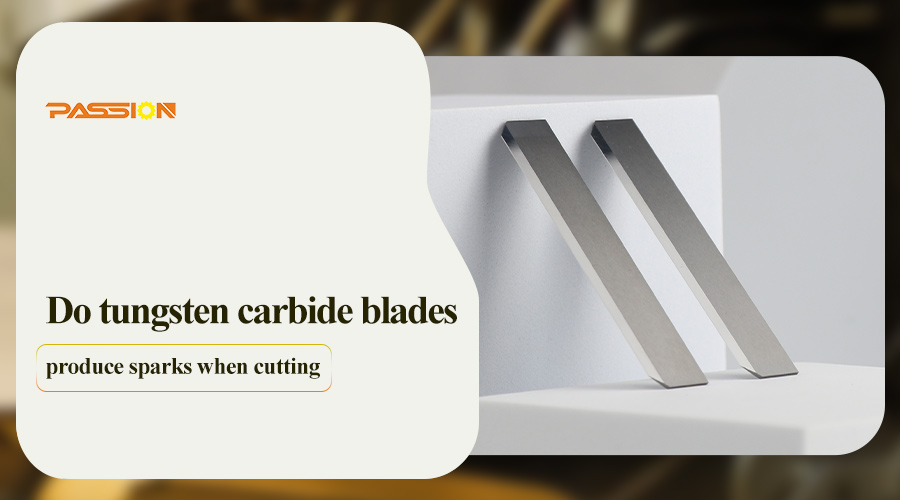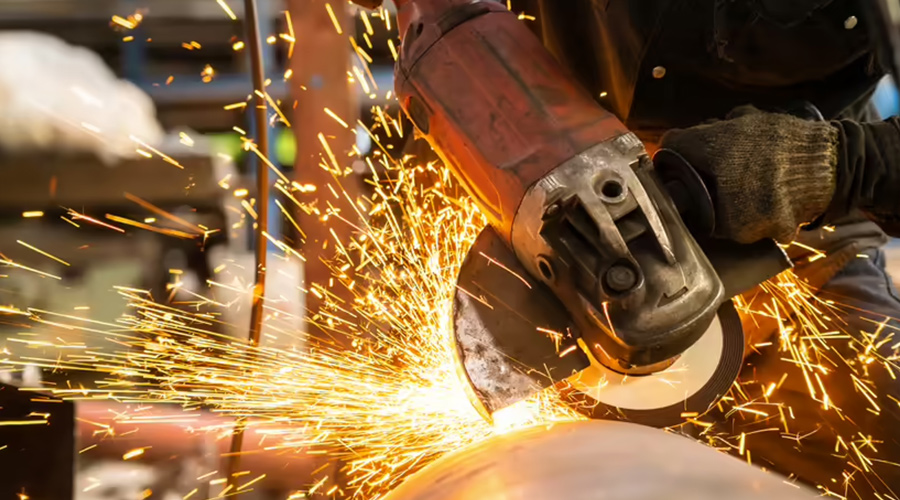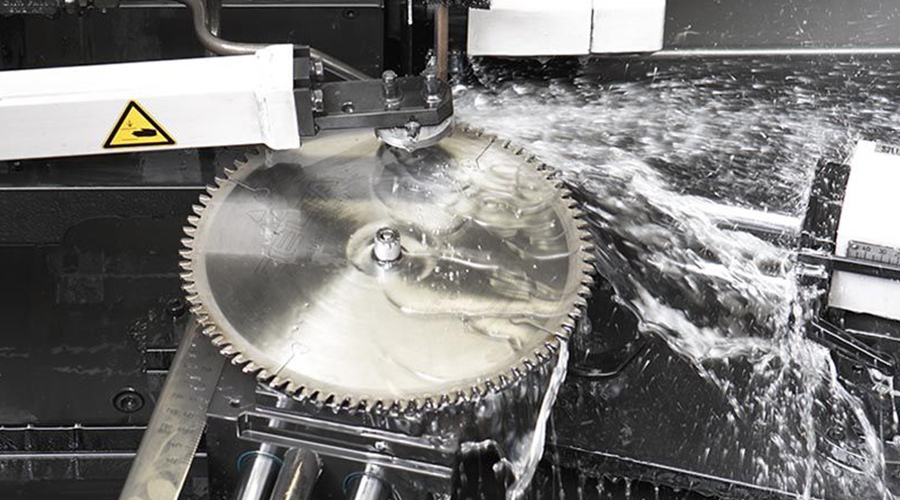
In the field of industrial manufacturing, tungsten carbide blade has become the leader in cutting operations due to its high strength, high hardness and excellent wear resistance. However, generally speaking, when industrial blades rotate at high speeds during the cutting process and come into close contact with the metal material, an eye-catching phenomenon quietly occurs - sparks fly. This phenomenon is not only intriguing, but also raises questions about whether tungsten carbide blades always produce sparks when cutting. In this article, we will explore this topic in depth and specifically introduce the reasons why tungsten carbide blades do not produce sparks when cutting under certain conditions.
Tungsten carbide blade, as a kind of cemented carbide, is mainly composed of tungsten, cobalt, carbon and other elements, which give it excellent physical and chemical properties. In cutting operations, tungsten carbide blades are able to cut various metal materials easily with their sharp edges and high-speed rotation. However, under regular circumstances, when the blade rotates at high speed to cut metal, tiny particles on the surface of the metal will be ignited due to the high temperature generated by friction, forming sparks.

However, not all tungsten carbide blades produce sparks when cutting. Under certain specific conditions, such as the use of special ratios of tungsten carbide materials or the adoption of specific cutting processes, tungsten carbide blades can cut without sparks. Behind this phenomenon lie complex physical and chemical principles.
First of all, the special ratio of tungsten steel material is the key. When manufacturing tungsten carbide blades, the microstructure and chemical composition of the blade can be changed by adjusting the content and proportion of tungsten, cobalt, carbon and other elements. These changes result in blades that have a lower coefficient of friction and higher thermal conductivity during the cutting process. When the blade is in contact with the metal, the heat generated due to friction can be quickly absorbed by the blade and conducted out, avoiding the ignition of tiny particles on the metal surface, thus reducing the generation of sparks.
Secondly, the choice of cutting process is also crucial. In the cutting process, the friction and temperature between the blade and the metal can be controlled by adjusting parameters such as cutting speed, cutting depth and cutting angle. When the cutting speed is moderate, the cutting depth is shallow and the cutting angle is reasonable, the friction and temperature can be significantly reduced, reducing the generation of sparks. In addition, the use of coolant to cool and lubricate the cutting area can also effectively reduce the temperature of the metal surface and reduce friction, further reducing the generation of sparks.
In addition to the above reasons, the lack of sparks when cutting with tungsten carbide blades may also be related to the nature of the metal material. Some metal materials have low melting point and high oxidation resistance, which are not easy to be ignited in the cutting process. When these metals come into contact with tungsten carbide blades, it is difficult to form sparks even if a certain amount of friction and temperature is generated.
However, it is worth noting that although specially proportioned tungsten steel materials and specific cutting processes can reduce the generation of sparks to a certain extent, they cannot completely eliminate sparks. In practical applications, it is still necessary to take necessary safety measures, such as wearing protective glasses, fireproof clothing and gloves, to ensure the safety of operators.

In addition, for cases where cutting operations need to be carried out in flammable and explosive environments, cutting equipment and blades with explosion-proof performance should be selected to reduce the risk of fire and explosion. At the same time, regular inspection and maintenance of cutting equipment and blades to ensure that they are in good working condition is also an important measure to reduce spark generation.
To summarize, whether tungsten carbide blade will generate sparks when cutting depends on a combination of factors. By adjusting the ratio of tungsten steel materials, optimizing the cutting process and choosing the right metal material and other measures, the spark generation can be reduced to a certain extent. However, it is still necessary to take necessary safety protection measures and regular inspection and maintenance measures in practical application to ensure the safety and efficiency of cutting operations. With the continuous progress of science and technology and the continuous improvement of the manufacturing process, it is believed that in the future there will be more innovative technologies and measures to reduce the generation of sparks and promote the safety and sustainable development of the industrial manufacturing field.
Later, We will continue to update information, and you can find more information on our website (passiontool.com) blog.
Of course, you can also pay attention to our Official social media:
Post time: Dec-27-2024









